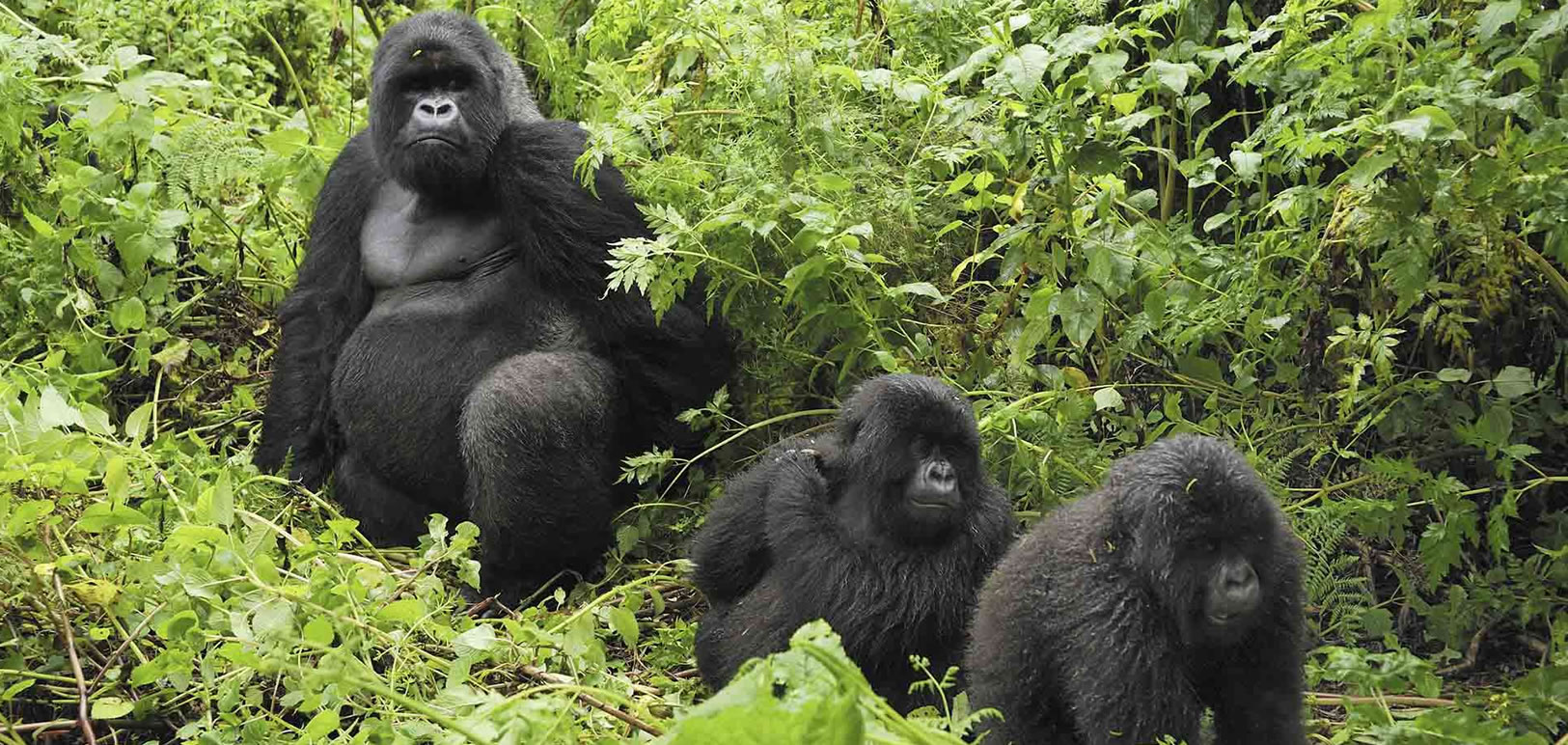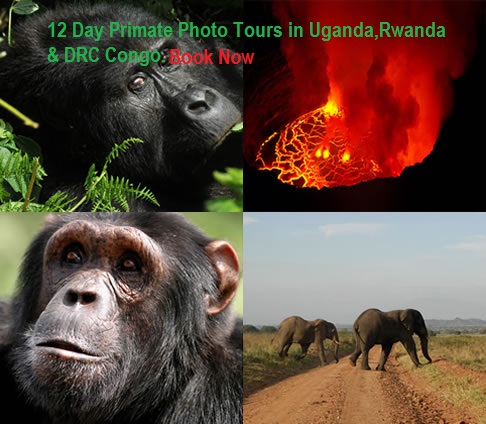Uganda a diverse country, filled with scenic wonders and welcoming people. A country where there are activities found nowhere else on the African Continent.
Home to almost half of the world’s surviving mountain gorillas; the World Heritage–listed Bwindi Impenetrable Forest National Park offering gorilla trekking safaris is one of East Africa’s most famous national parks. Set over 331 sq. km of improbably steep mountain rain forest, the park is home to an estimated 340 gorillas: undoubtedly Uganda’s biggest tourist draw card. As well as its famous primates, the park contains 120 other species of mammal – more than any of Uganda’s other national parks – though sightings are less common due to the dense forest.
Lucky visitors might see forest elephants, 11 species of primate (including birds and L’Hoest’s monkeys), duikers, bush bucks, African golden cats and the rare giant forest hog, as well as a host of bird and insect species. For birdwatchers it’s one of the most exciting destinations in the country, with over 350 species, including 23 of the 24 endemic to the Albertine Rift and several endangered species, such as the African green broad bill. With a good guide, sighting daily totals of over 150 species is possible. On the greener side of the aisle, Bwindi harbours eight endemic plants.
Murchison Falls Once described as the most spectacular thing to happen to the Nile along its 6700km length, the 50m wide Victoria Nile is squeezed here through a 6m gap in the rock and crashes through this narrow gorge with unbelievable power. The 45m waterfall was featured in the Katharine Hepburn and Humphrey Bogart film The African Queen. Murchison was even stronger back then, but in 1962 massive floods cut a second channel creating the smaller Uhuru Falls 200m to the north.
There’s a beautiful walking trail from the top down to the river, and the upper stretch of this path offers views of Uhuru Falls, which a boat trip will not bring you close enough to appreciate. A ranger (US$15 per person) is required on this walk. If you take the launch trip, the captain will let you off at the trail head and a ranger will meet you there. The boat can then pick you up later if there’s an afternoon launch. This is also a good way for campers to get to the campsite at the top of the falls before returning to Paraa the next morning. The hike takes about 45 minutes from the bottom.
Queen Elizabeth National Park is one of the most visited parks in Uganda. It is the perfect park when combined with gorilla tracking Bwindi Impenetrable forest, one can in five or six days can visit the Mountain Gorillas of Uganda in Bwindi Impenetrable Forest, take in the tree climbing Lions in the Ishasha area of Queen Elizabeth Park, take a Boat Ride Safari on the Kazinga Channel with its abundant wildlife, hundreds of birds, the highest concentration of hippos in Africa. Queen Elizabeth Park is simply a tapestry of natural wonders in the western region of Uganda. Queen Elizabeth Park is filled with a lot of wildlife, besides its lions, leopards and other cats, its elephants, buffaloes, antelopes and more species of birds than any other Ugandan Wildlife Park, there are the scenic Katwe explosion craters, the Maramagambo forest you can go hiking birding, the cultural visits you can Enjoy.
Kibale Rain forest Jungle offers a variety of things to do and see. There are many activities in or near the park that Visitors and Tourists are delighted by. Kibale Forest Park is simply an amazing tropical rain forest that is home to much wildlife, primates, birds, mammals, butterflies and a variety of trees, plants, flowers to name just a few. Kibale Forest is the best place in East Africa for Chimpanzee tracking plus there are 12 species of primates found in the forest. Here you can either track chimpanzees or spend a whole day in a Chimpanzee Habituation Experience. Hiking, Birding, nocturnal Forest Walks with spot lights are other options. There are also special Children activities for those that are below 15 years old, while the parents track Chimpanzees.

